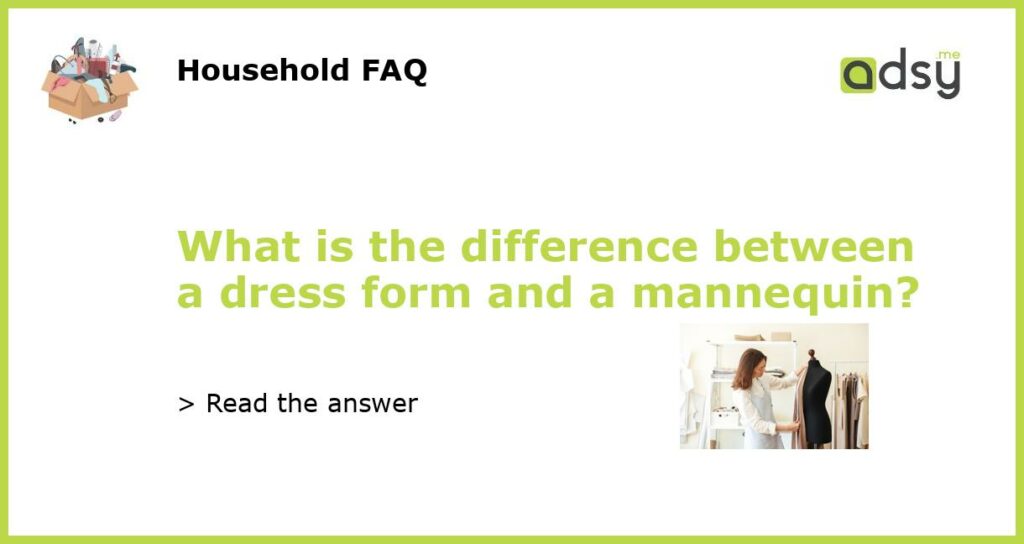Dress Form vs Mannequin: Understanding the Key Differences
When it comes to displaying clothing and creating garments, dress forms and mannequins are both essential tools used in the fashion industry. While these terms are often used interchangeably, there are distinct differences between the two. In this article, we will explore the characteristics and purposes of dress forms and mannequins, helping you understand their unique contributions to fashion design and retail.
Definition and Purpose of a Dress Form
A dress form, also known as a sewing dummy or tailor’s dummy, is a body-shaped structure designed to mimic the proportions and shape of the human body. It is primarily used by garment makers and fashion designers to create and alter patterns, design clothing, and achieve accurate fitting during the construction process. Dress forms may be simple, with minimal features, or they can be advanced with adjustable components to match specific body measurements and postures.
Definition and Purpose of a Mannequin
A mannequin is a three-dimensional model of the human body, typically made of fiberglass, wood, or plastic. It is used by retailers to display clothing and accessories in a visually appealing way. Mannequins are often used in store windows, shop displays, and fashion shows. Unlike dress forms, mannequins are usually non-adjustable, and their features are stylized to represent a certain look or aesthetic. They are created to showcase clothing in a realistic and attractive manner, helping customers visualize how the garments will look when worn.
Differences in Construction
One of the primary differences between dress forms and mannequins is the construction. Dress forms are designed to be functional tools for garment creation and fitting. They are typically padded and covered with a fabric, such as linen or canvas, that allows for easy pinning and draping of fabric. Dress forms may have adjustable parts, such as dials or wheels, to modify their measurements and shape based on individual body types. Mannequins, on the other hand, are created with a focus on aesthetics and visual appeal. They often have realistic features, such as facial features and hair, and are made from materials like fiberglass or plastic. Unlike dress forms, mannequins are not intended for garment construction or fitting purposes.
Purposes in the Fashion Industry
Dress forms and mannequins play different roles within the fashion industry. Dress forms are mainly used by fashion designers, dressmakers, and pattern makers during the garment creation process. They help to achieve accurate fitting, drape fabric, and test design concepts before cutting and sewing the final garment. Dress forms are also used for garment alterations and adjustments, ensuring that the clothing fits properly on the human body. Mannequins, on the other hand, are primarily used by retailers to showcase clothing and attract customers. They serve as visual merchandising tools and help consumers envision how the garments will look when worn. In fashion shows and events, mannequins are used to display designs on a static platform, allowing attendees to closely observe the clothing.






